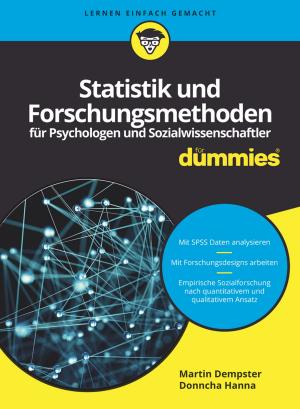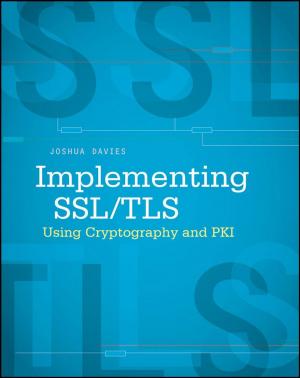Risk Centric Threat Modeling
Process for Attack Simulation and Threat Analysis
Nonfiction, Social & Cultural Studies, Political Science| Author: | Tony UcedaVelez, Marco M. Morana | ISBN: | 9781118988350 |
| Publisher: | Wiley | Publication: | May 12, 2015 |
| Imprint: | Wiley | Language: | English |
| Author: | Tony UcedaVelez, Marco M. Morana |
| ISBN: | 9781118988350 |
| Publisher: | Wiley |
| Publication: | May 12, 2015 |
| Imprint: | Wiley |
| Language: | English |
This book introduces the Process for Attack Simulation & Threat Analysis (PASTA) threat modeling methodology. It provides an introduction to various types of application threat modeling and introduces a risk-centric methodology aimed at applying security countermeasures that are commensurate to the possible impact that could be sustained from defined threat models, vulnerabilities, weaknesses, and attack patterns.
This book describes how to apply application threat modeling as an advanced preventive form of security. The authors discuss the methodologies, tools, and case studies of successful application threat modeling techniques. Chapter 1 provides an overview of threat modeling, while Chapter 2 describes the objectives and benefits of threat modeling. Chapter 3 focuses on existing threat modeling approaches, and Chapter 4 discusses integrating threat modeling within the different types of Software Development Lifecycles (SDLCs). Threat modeling and risk management is the focus of Chapter 5. Chapter 6 and Chapter 7 examine Process for Attack Simulation and Threat Analysis (PASTA). Finally, Chapter 8 shows how to use the PASTA risk-centric threat modeling process to analyze the risks of specific threat agents targeting web applications. This chapter focuses specifically on the web application assets that include customer’s confidential data and business critical functionality that the web application provides.
• Provides a detailed walkthrough of the PASTA methodology alongside software development activities, normally conducted via a standard SDLC process
• Offers precise steps to take when combating threats to businesses
• Examines real-life data breach incidents and lessons for risk management
Risk Centric Threat Modeling: Process for Attack Simulation and Threat Analysis is a resource for software developers, architects, technical risk managers, and seasoned security professionals.
This book introduces the Process for Attack Simulation & Threat Analysis (PASTA) threat modeling methodology. It provides an introduction to various types of application threat modeling and introduces a risk-centric methodology aimed at applying security countermeasures that are commensurate to the possible impact that could be sustained from defined threat models, vulnerabilities, weaknesses, and attack patterns.
This book describes how to apply application threat modeling as an advanced preventive form of security. The authors discuss the methodologies, tools, and case studies of successful application threat modeling techniques. Chapter 1 provides an overview of threat modeling, while Chapter 2 describes the objectives and benefits of threat modeling. Chapter 3 focuses on existing threat modeling approaches, and Chapter 4 discusses integrating threat modeling within the different types of Software Development Lifecycles (SDLCs). Threat modeling and risk management is the focus of Chapter 5. Chapter 6 and Chapter 7 examine Process for Attack Simulation and Threat Analysis (PASTA). Finally, Chapter 8 shows how to use the PASTA risk-centric threat modeling process to analyze the risks of specific threat agents targeting web applications. This chapter focuses specifically on the web application assets that include customer’s confidential data and business critical functionality that the web application provides.
• Provides a detailed walkthrough of the PASTA methodology alongside software development activities, normally conducted via a standard SDLC process
• Offers precise steps to take when combating threats to businesses
• Examines real-life data breach incidents and lessons for risk management
Risk Centric Threat Modeling: Process for Attack Simulation and Threat Analysis is a resource for software developers, architects, technical risk managers, and seasoned security professionals.















